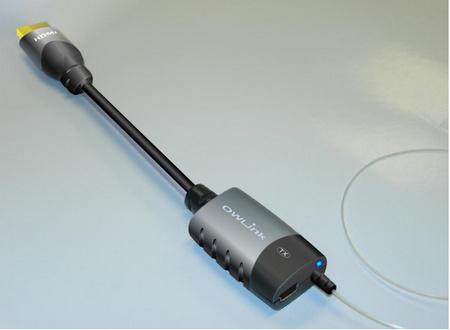- Related articles
- Optical Transceivers for Cisco WS-C2960+24PC-S Switch
- All Cisco DWDM-SFP10G-61.41's information (List price, Specs, Datasheet PDF, Compatibility
- Optical Transceivers for Cisco SG500-28P-K9-G5 Switch
- All Cisco XENPAK-10GB-LR+'s information (List price, Specs, Datasheet PDF, Compatibility m
- What is CSFP transceiver?
- Applicable to 1000BASE-BX-U Standard Optical Transceiver Models
- What Is the Components of Network Interface Card?
- What is mini GBIC transceiver?
- Used In 10GBASE-SR Standard Optical Transceiver Models
- Applicable to 40GBASE-LRL4 Standard Optical Transceiver Models

Definition of Active Optical Cable
Active Optical Cable is the type of optical cable or technology which uses the electrical inputs similar to the traditional copper lines. However, Active Optical Cable uses the optical fiber in between the connectors. This blog gives more information regarding the Active Optical Cable.
Description of Active Optical Cable
Active Optical Cables (AOC) accelerates storage, data, and high-performance computing connectivity. Our complete product line includes SFPwire AOC for 10GbE; Quadwire AOC for 40/100GbE, InfiniBand QDR/FDR/EDR, SAS3 and PCIe3; and C.wire AOC for 100GbE and beyond. Each cable solution leverages Finsar's fiber optic technology for the transmission of data while reducing the weight, density and power consumption compared to traditional copper solutions.

Key Advantages of Active Optical Cable
Lowest weight for high port count architectures
Small bend radius for easy installment
Low power consumption enabling a greener data center
Low-cost solution for data centers and high-performance computers
Application of Active Optical Cable
Molex Active Optical Cables (AOCs) achieve high data rates over long reaches, using a fraction of the power of other brands while providing streamlined installation for high-performance computing and storage applications.
Active Optical Cable assemblies have been designed to support multiple protocols. Most of them are compliant with SFP+ Ethernet and InfiniBand electrical. Here is what a typical 40 Gb/s QSFP+ (Quad Small Form-Factor Pluggable Plus) AOC supports.
1. Multirate: 1.0 Gb/s – 10.3125 Gb/s (per lane)
2. 4-Channel full-duplex active optical cable transceiver
3. InfiniBand SDR (2.5Gb/s), DDR (5 Gb/s), QDR (10 Gb/s)
4. Ethernet 10G, 40G
5. Fibre Channel 8G, 10G
6. SAS, SATA 3G, 6G
7. Fibre Channel SAN 10G, 20G, 40G
8. Myrinet 40G
Active Optical Cable assemblies can be used on optical backplanes, rack-to-rack, shelf-to-shelf interconnect, storage, hubs, switches, routers, servers, etc.
Here is a breakdown of AOC market by applications.
• Mainframes/Supercomputers (High-Performance Computing – HPC)
• High Definition TV (HDTV)
• Personal Computers
• Consumer Electronics (CE)
Here is a breakdown of AOC market by Bus Interfaces.
• InfiniBand – High-speed interface bus used inside HPC and data centers
• HDMI – High definition multimedia interface
• USB – Universal Serial Bus
• DisplayPort – Bus specification developed by Video Electronics Standards Asso. (VESA)
The following picture shows an HDMI Active Optical Cable which can extend A/V signals up to 150 feet. This example shows that AOC is not limited only to data center applications.
Conclusion
Active Optical Cable is one of the most recommended fiber cables by the professional technicians. This is due to its unique feature of using both the fiber optical and electrical signals. Today, many homes are installing Active Optical Cable for its high performance.





















































